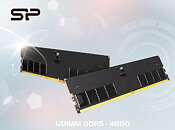
ADATA Wins Six Red Dot Design Awards
ADATA Technology (Taiwan Stock Exchange: 3260.TWO), a manufacturer of high-performance DRAM modules, NAND Flash products, mobile accessories, gaming products, electric power trains, and industrial solutions today announces that it has been awarded six 2022 Red Dot Design Awards for product design excellence. The award winners include the XPG CASTER and SLAYER DDR5 DRAM, XPG ALPHA and PRIMER mice, and ADATA ELITE SE920 and SE880 external solid state drives (SSD).
"From three Red Dot winners last year to six winners this year, ADATA has shown its unwavering emphasis on product design as a key aspect of the user experience," said Ibsen Chen, Senior Product Marketing Director at ADATA. "Whether they be DRAM, gaming mice, or external SSDs, we not only offer users the performance and functionality they require but also a fitting industrial design that appeals to them on an emotional level." The Red Dot Design Award is a globally recognized award that honors innovative companies, praises design excellence, and ultimately recognizes those responsible for tomorrow's trends. An international jury of design experts with a variety of backgrounds assesses each submission on its merits.
"From three Red Dot winners last year to six winners this year, ADATA has shown its unwavering emphasis on product design as a key aspect of the user experience," said Ibsen Chen, Senior Product Marketing Director at ADATA. "Whether they be DRAM, gaming mice, or external SSDs, we not only offer users the performance and functionality they require but also a fitting industrial design that appeals to them on an emotional level." The Red Dot Design Award is a globally recognized award that honors innovative companies, praises design excellence, and ultimately recognizes those responsible for tomorrow's trends. An international jury of design experts with a variety of backgrounds assesses each submission on its merits.


































































